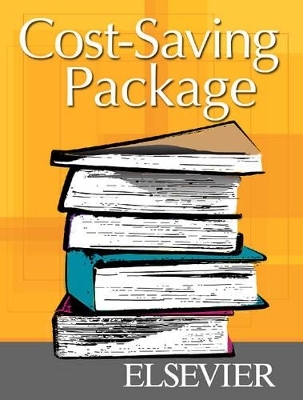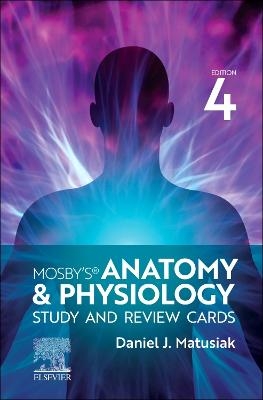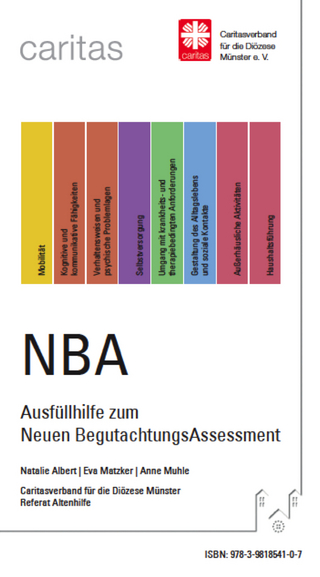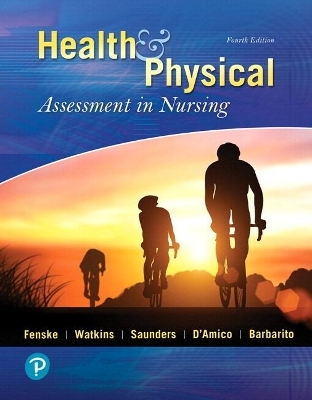
Clinical Nursing Skills and Techniques
Mosby
978-0-323-04192-8 (ISBN)
- Titel ist leider vergriffen;
keine Neuauflage - Artikel merken
This convenient, money-saving package is a must-have for nursing students! It includes Perry's "Clinical Nursing Skills Techniques, 6th edition" text and Mosby's "Nursing Skills CD-ROMs 2.0 - Student Version".
Anne Griffin Perry, RN, MSN, EdD, FAAN, Professor Emerita, School of Nursing, Southern Illinois University, Edwardsville, Illinois Patricia A. Potter, RN, MSN, PhD, FAAN, Director of Research, Patient Care Services Barnes-Jewish Hospital St. Louis, MO
Set of 8 CD-ROMS includes: *Basic Principles: .Roles and responsibilities .Delegation .The nursing process .Communication, including charting, end-of-shift report, & guidelines for effective communication .Medical asepsis, including the chain of infection & handwashing .Patient & resident rights *Bathing: .The complete bedbath .Bathing - the male client .Back massage .Bathing - the female client *Bedmaking: .Making the occupied bed *Body Mechanics & Exercise: .Principles of body mechanics .Moving a person up in bed with a lift/draw sheet .Turning & positioning a person in a side-lying position .Dangling .Transfer from bed to wheelchair using a transfer belt .Passive range-of-motion exercises .Ambulation using a gait belt .Signs/symptoms of and precautions for orthostatic hypotension *Measurements: .Height and weight .Intake and output .Vital signs .Temperature, including oral, axillary & rectal .Pulse, including radial and apical .Respiration, including rate, rhythm, & effort .Blood pressure (one-step & two-step methods) *Normal Elimination: .Assisting with a urinal .Assisting with a bedpan (standard & fracture) .Providing catheter care .Applying a condom catheter .Administering a cleansing enema *Nutrition & Fluids: .Preparing for meals .Serving meal trays, including the use of the "clock" technique for a visually impaired person .Feeding the dependent person, including positioning and observations for person with dysphagia, signs of aspiration and difficulty swallowing, & "pocketing" of food *Personal Hygiene & Grooming: .Oral hygiene, including oral care for unconscious person, denture cleaning, & precautions for the person at risk of aspiration .Hair care, including shampooing in bed and shaving the male patient's facial hair .Nail and foot care, including clipping toenails .Dressing, including changing a gown when an IV is present .Measuring for and application of TED hose *Safety & Restraints: .Preventing accidents and falls .Applying restraints, including vest restraint, extremity restraint, & finger-control mittens .Using restraint alternatives, including the proper use of side rails and bed & wheelchair locks .Safe use of restraints, including physician's orders and delegation guidelines .Monitoring restraint use *Preventing & Treating Pressure Ulcers: .Assessing risk, including elements of the comprehensive assessment (records review, the Braden Scale, after total assessment, skin assessment, assessment documentation) and stages of pressure ulcer formation .Preventive measures, including skin inspection, skin care, positioning, position changes, & pressure-relief devices .Treatment of pressure ulcers, including dressing change, inspection of wound, measuring wounds, application of prescribed medications, & irrigation *Enteral Nutrition: .Feeding tube insertion using nasogastric route, including enteral feedings, continuous feedings using controller pump, & intermittent feedings .Feeding tube irrigation .Feeding tube removal *Managing Intravenous Fluid Therapy: .Regulating IV infusions, including how to calculate the drip rate, using the roller-clamp method and infusion pumps, assessments of infusion site and tubing, & use of fluid volume indicator caps .Changing IV tubing and fluids .Changing IV dressings, including guidelines for dressing changes, assessing and cleansing/re-dressing the infusion site *Ostomy Care: .Pouching an enterostomy .Urinary diversion *Oxygenation video: .Oxygen safety .Flow rates by nasal cannula and face mask .Application of cannula and mask .Airway maintenance, including suctioning & precautions against drying of airway mucosa .Care of tracheostomy .Potential complications & assessment parameters *Preoperative Nursing Care: .Preoperative assessment, including nursing history and physical assessment .Family support and participation .Postoperative exercises and pain management, including PCA instruction, diaphragmatic breathing, incentive spirometry, controlled coughing, turning, leg exercises/ROM, & non-pharmacologic methods of pain relief .Surgical preparation *Postoperative Nursing Care: .Post-anesthesia recovery room transfer .Pain management, including assessment parameters, use of PCA, pain scales and language, & non-pharmacologic measures to promote comfort and relieve pain .Promoting postoperative recovery, including ambulation, breathing and coughing exercises, splinting incisional area, pneumatic compression stockings, wound care and management of wound drainage and drainage systems, NG tube management, & discharge planning *Specimen Collection: .Mid-stream urine specimen collection .Fecal occult blood testing using the Hemoccult test .Gastroccult and gastric pH testing from a NG tube .Sputum specimen collection .Wound culture .Blood glucose testing .Labeling, storage, & transfer of specimens to laboratory .Evaluating results of bedside tests *Suctioning: .Pre- and post-procedure assessments .Oropharyngeal suctioning .Nasotracheal suctioning .Suctioning artificial airway, including suctioning an endotracheal tube *Urinary Catheter Management: .Urinary catheter insertion, including technique for site prep and insertion of indwelling catheter with a female patient and straight catheter for a male patient .Obtaining sterile urine specimen from an indwelling catheter, including technique for clamping catheter and specimen collection by aspiration .Removal of indwelling catheter *Wound Care: .Sterile gloving, including latex precautions, handwashing, proper size and type of glove, opening glove package, gloving technique, & sterile-to-sterile contact precautions .Wound assessments, including indirect and direct assessments, healing by primary and secondary intention, wound drainage systems, & types of wound drainage .Dressing changes, including wet-to-dry dressings and use of the wound VAC system *Administering Intravenous Fluid Therapy: .Initiating a peripheral IV .Troubleshooting intravenous infusions .Discontinuing IV therapy *Injections: .Preparing injections from an ampule and vial .Preparing insulin .Subcutaneous injections .Intradermal injections .Intramuscular injections *Intravenous Medications: .Administering IV piggyback medications .Administering intravenous medications by mini-infusion pumps .Administering medication by IV bolus .Adding medications to intravenous fluid containers *Non-Parenteral Medications: .Topical medications, including transdermal patch and measured ointment .Eye medications, including eye drops and eye ointment .Eardrops .Metered dose inhaler .Insertion of rectal suppository *Safe Medication Administration: .Preventing medication errors (right medication, right dose, right time, right patient, right route) .Administering oral medications .Documentation of medication administration *Vascular Access: .Dressing care .Blood draws and fluid administration .Troubleshooting
| Erscheint lt. Verlag | 14.8.2006 |
|---|---|
| Verlagsort | St Louis |
| Sprache | englisch |
| Themenwelt | Medizin / Pharmazie ► Pflege |
| ISBN-10 | 0-323-04192-2 / 0323041922 |
| ISBN-13 | 978-0-323-04192-8 / 9780323041928 |
| Zustand | Neuware |
| Haben Sie eine Frage zum Produkt? |
aus dem Bereich


